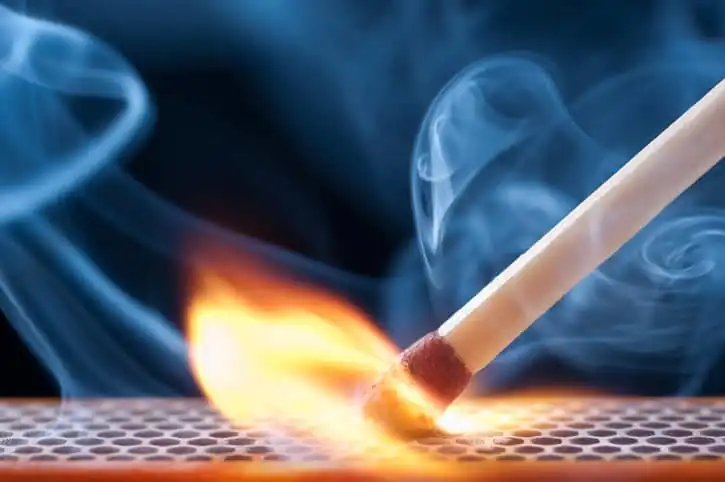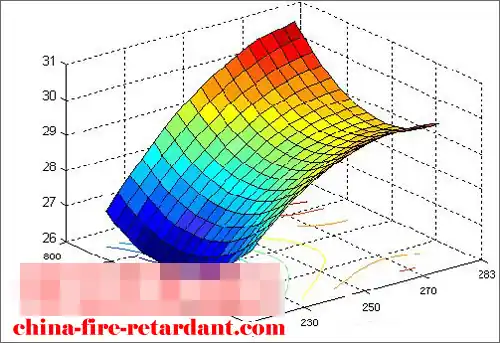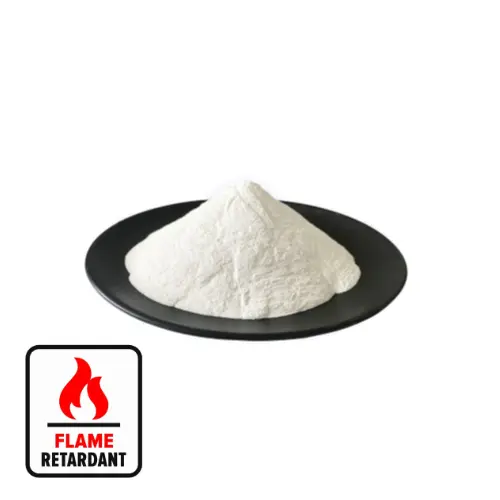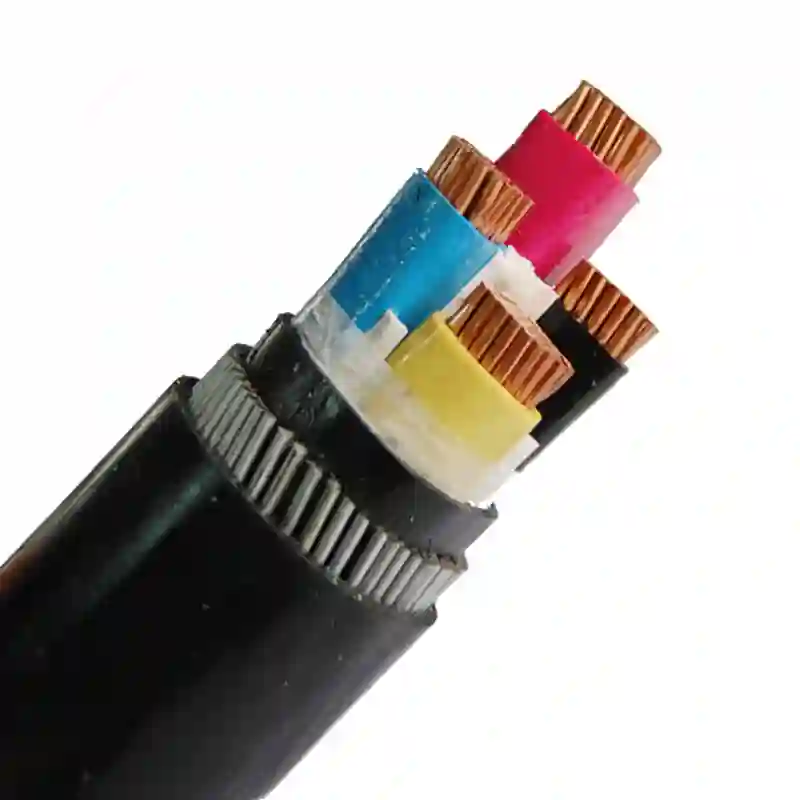Flame retardant fibers and flame retardant textiles principle and production process research and development detailed explanation

Flame retardant fiber is a new material of high-tech fiber with flame retardant and anti-melt drop performance. The product adopts the sol-gel technology, so that the inorganic polymer flame retardant in the viscose fiber organic macromolecules in the nanometer state or interpenetrating network state exists, not only to ensure the excellent physical properties of the fiber, but also to achieve the characteristics of low-smoke, non-toxic, no odor, not melt and drip. In recent years, the number of fires caused by textiles has been increasing all over the world, and the losses caused by textile fires in China are not small, therefore, the research on flame retardant fibers around the world has never stopped in the past few decades. China’s flame retardant fibers started in the 1950s and 1960s, and entered a new period of development in the 1980s, but in general, flame retardant fiber products are still in the research stage.
1 World Research on Flame Retardant Fibers and Their Textiles
1.1 Current situation of flame retardant fiber production technology
The use of flame retardant is to make cotton, wool fibers and other fibers after flame-retardant finishing with flame-retardant properties, and flame-retardant polyester, flame-retardant aramid, flame-retardant acrylic fibers and other fibers that are synthetic fibers in the study of flame retardant modification of synthetic fibers. The flame retardant modification of synthetic fibers mainly includes the flame retardant modification of polypropylene fibers, the flame retardant modification of polyamide fibers, the flame retardant modification of polyacrylonitrile fibers and the flame retardant modification of polyester fibers. Aramid flame retardant fiber belongs to the aromatic polyamide class, for the poly mesitylene mesitylene fiber. Aramid flame retardant fiber products have a soft hand, good fluffiness, drape, moisture absorption and breathability and high strength, abrasion resistance, drape, good surface finish, color fastness, and fire charring does not melt the droplets and other excellent characteristics, so as to meet the quality requirements of high and medium-grade flame retardant apparel, decorative fabrics.
1.2 Synthetic Fiber Flame Retardant Technology and Market Development
A. Silicon flame retardant system
Silicon series of flame retardant modification of new methods, including silicone-based flame retardant and inorganic silicone-based flame retardant, silicone-based flame retardant is mainly siloxane compounds, such as silicone-based resin-based flame retardant flame retardant polyacrylonitrile fibers, combustion with no toxic gases, and does not melt and drip and other advantages. At present, inorganic silicone-based flame retardants are mainly used in the form of polyamide / inorganic clay nanocomposites. Foreign countries have also been studied in the polyester polymerization process or spinning melt to add nanolayer silicate materials to modify the physical and mechanical properties of polyester materials and combustion properties. The Institute of Chemistry of the Chinese Academy of Sciences has also carried out research work in this area, and has made certain achievements.
Inorganic flame retardant ultrafine has become a hot spot in today’s flame retardant technology development. Using physical or chemical methods to disperse the solid flame retardant into l ~ 100nm size particles of the method, known as nano-flame retardant technology. Physical methods include evaporation condensation method and mechanical crushing method; chemical methods include gas phase reaction method and liquid phase method. For example, antimony trioxide through the plasma arc tail gas reaction evaporation area evaporation, and then into the condensation chamber for rapid cooling, you can get 0.275nm antimony trioxide particles. Flame retardant ultra-fine processing technology, not only can improve the flame retardant efficiency, reduce the amount of flame retardant, but also for the improvement of flame retardant fuming, weathering and coloring will have a great impact. In recent years, the colloidal antimony trioxide developed abroad has the characteristics of smaller particle size (less than 100 nm), easy dispersion, low coloring strength, etc., and has achieved better results in the practical application of flame retardant fibers.

B. Microencapsulation technology
Microcapsule technology is to wrap the flame retardant particles, such as silane, titanate on aluminum hydroxide, magnesium hydroxide surface treatment; or flame retardant adsorption in the voids of the inorganic carrier, the formation of cellular microcapsule flame retardant, which improves the compatibility of the flame retardant with the polymer. Silane molecules, titanate molecules in the aluminum hydroxide, magnesium hydroxide particles on the surface of the formation of “molecular film layer”, between the flame retardant and the polymer tower up a “bridge bond”; the use of silicates, silicone resin, can make easy thermal decomposition of the organic flame retardant is well protected. The use of silicates and silicone resins can make the organic flame retardants, which are easy to be thermally decomposed, well protected, thus effectively improving the thermal stability of the flame retardants. At home and abroad on the red phosphorus, ammonium polyphosphate and other flame retardants microencapsulation of a large number of studies, microencapsulation of red phosphorus and polyamide blending spinning can also obtain self-extinguishing flame retardant polyamide fibers, microencapsulated ammonium polyphosphate can be used for polypropylene fiber flame retardant.
C. Compounding Technology
In the process of flame retardant treatment of materials, it is found that the simultaneous use of certain flame retardants will achieve a good synergistic effect, to obtain a more ideal flame retardant effect. For example, phosphorus plus halogen, antimony plus halogen, phosphorus plus nitrogen, phosphorus plus crystalline water compounds, etc., this compounding method is called compounding technology. Halogen phosphorus letter silicon compound compounding application, its flame retardant effect is more ideal, halogen, phosphorus and silicon have flame retardant synergistic effect. At high temperatures, halogen, phosphorus to promote the generation of carbon, silicon to increase the thermal stability of these carbon layers, and siloxane instead of silane, phosphorus and child two elements of the flame retardant synergistic effect has been further strengthened.
D. Development direction of synthetic fiber flame retardant
The development of synthetic fiber flame retardant technology should be developed in the direction of multifunctionality, in order to improve the flame retardant efficiency at the same time, so that the fiber at the same time with other aspects of performance, such as flame retardant dyeing polyester fibers at room temperature, etc.; to improve the compatibility and mixing uniformity of flame retardants in fibers; a new type of flame retardant system in the application of flame retardant modification of fibers, etc., so that the flame retardant fibers industrialization of the market will be very broad prospects.
E. Functional composite
Functional composite flame retardant is becoming a new development trend, now the world is developing dual-function and multi-function flame retardant. In order to join a composite material can play a flame retardant antistatic or flame retardant dyeing, flame retardant antimicrobial dual-function and multifunctionality, such as the use of antistatic flame retardant and polyester chips blended spinning method for the preparation of antistatic flame retardant polyester fiber. At present, Europe, the United States and Japan and other countries have produced aluminum hydroxide, silicon dioxide, zinc borate and other inorganic substances with flame retardant, smoke suppression function and antimony trioxide inorganic composite flame retardant. Treatment of flame retardant fibers with fluoride not only contributes to the flame retardant durability of the fibers, but also effectively improves the waterproof performance of the fibers.
1.3 Progress of Research on Flame Retardant Fibers and Textiles by Domestic and Foreign Companies
A. Flame retardant technology development at home and abroad
Now there are dozens of varieties of flame-retardant fibers on the market at home and abroad, and the traditional processing of flame-retardant fibers are mainly flame-retardant polyester, flame-retardant acrylic, flame-retardant vinylon. With the progress of science and technology, countries have recently developed and produced a variety of flame-retardant fibers, such as poly(m-toluenebis(carboxymethylene)m-phenylenediamine) fibers, polyamide monoimide fibers, polyimide 2080 fibers, heterocyclic polymer polybenzimidazole fibers (PIM2080), phenolic fibers. These special flame retardant fiber flame retardant effect are relatively good, in the industrial and special areas have great use.
B. DuPont
Flame-retardant textiles in the United States DuPont produced in the 1960s Nomex for the famous. With the wide application of the fiber, DuPont has developed a series of improved Nomex products, including NomexlIIA, which is widely used, and is composed of 93% Nomex, 5% Kevlar and 2% antistatic fiber.
C, Zhejiang Textile and Apparel Institute
Zhejiang Textile and Apparel Institute Key Laboratory, recently successfully developed a high-temperature flame retardant and thermal radiation protective fabrics. This project is Zhejiang Textile and Apparel College, one of many successful projects. High-temperature flame retardant and heat radiation protective fabrics, using high-temperature high-tech fiber development, with high strength, heat, fire, arc, heat radiation and other characteristics. Placed under the electric welding welding flower for 5min, the fabric only changed color without obvious breakage. After making clothes, it is suitable for fire fighting, welding, metallurgy, steel making and other industries in contact with open flames and radiation heat source place of labor protection products.
D, German textile company
Germany developed TreviraCS new fabrics, it is in the combustion of carbon monoxide emissions, only equivalent to other fabrics (such as LSZ wool fabrics, denatured polyacrylonitrile) one-fifth of the combustion and flame retardant does not emit chlorine cyanide, sulfur dioxide, hydrogen chloride, hydrogen fluoride and other gases. Usually where the surface treatment of flame retardant fabrics, flame retardant properties are gradually reduced over time, while the flame retardant products made of TreviraCS fabrics, in the polymer chain of synthetic fibers, that is, containing phosphorus components, because of the fiber itself is flame retardant, its performance can be maintained for a long time. Flame retardant properties are not affected by washing nor by fiber aging.
The development of flame retardant fibers will be newer, safer and more scientific. Flame-retardant products will be made using halogenated materials, people expect to no longer use these plasticizers, stabilizers, halogenated flame retardants, etc., because the halogen-containing products in the combustion of a high concentration of toxic and corrosive gases, so companies at home and abroad are committed to the research of flame-retardant products that do not contain halogenated materials.
2 The performance of flame retardant textiles
A. China’s regulations on combustion performance
At present, countries around the world pay great attention to the requirements of clothing with flame-retardant properties, which shows the importance of clothing flame retardant in the clothing functionality test. China’s regulations on the performance of textiles are shown in Table 1.
B. Evaluation of Flame Retardant Properties of Fabrics
Evaluation of the flammability of fabrics mainly from two aspects to consider: on the one hand is easy to ignite, that is, the ignition point of the high and low, which indicates the ease of fabric fire; on the other hand, the burning performance of the fabric that is flame retardant.
Evaluation of fabric combustibility has two determination methods: one is according to the fabric burning rate evaluation, that is, the fabric according to the specified time and flame contact after a period of time to determine the degree of damage; another is through the oxygen index to judge. Oxygen index is the expression of the oxygen concentration required when the fabric burns again, and the combustibility of the fabric is judged through the determination of the oxygen index.
Flame retardant performance test methods: combustion test methods are varied, it is difficult to compare the results of various test methods with each other, and the experimental results can only illustrate the advantages and disadvantages of the combustion performance of fabrics to a certain extent. China’s current test for fabric flame retardant mainly use GB / T5455-1997 (textile combustion performance test vertical method).
3 Conclusion
High-temperature flame retardant fiber molecular structure is unique, no need to add flame retardant or through modification, itself has high temperature flame retardant properties, and high value-added, with good economic and social benefits. Flame-retardant textiles have been highly concerned by countries all over the world, along with a series of regulations and standards, the future market of China’s flame-retardant textiles will continue to expand and gradually move towards the standardization of the road!


